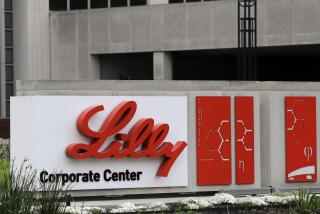Consumer Group Decries Rise in Drug Prices : Health care: Study says cost of Top 20 drugs rose 4.3% from ’93 to ’94. Firms question survey’s integrity.
- Share via
WASHINGTON — Prices of the 20 top-selling prescription drugs are rising faster than inflation, despite drug company promises to slow the increases, a consumer group charged Wednesday.
But a major industry group, the Pharmaceutical Research and Manufacturers of America, or PhRMA, questioned the survey’s methodology and said drug inflation hit a 22-year low last year.
Families USA, a health consumers group, said that last year, when national health care reform seemed a real possibility, drug companies that opposed government-imposed regulations pledged to keep prices down.
“Those were worthless promises,” Ron Pollack, executive director of Families USA, told a news conference.
The group’s study found that prices of the Top 20 drugs rose 4.3% from 1993 to 1994, while overall inflation rose 2.7%.
The elderly bear the brunt of the drug increases, he said. The federal Medicare program does not cover prescription drugs and many retirees live on fixed incomes.
Pollack said that even after the considerable research costs are taken into account, drug companies make bigger profits than other Fortune 500 companies.
Drug company profits averaged 15% in 1993, compared to 2.9% for the average Fortune 500 business, he said.
PhRMA said that the producer price index for pharmaceuticals has been declining steadily since 1989, when drug prices rose 9.5%. Preliminary figures for the two months ended in January show drug inflation was a scant 0.9%, he said.
A variety of market forces, including more generic drugs and more discounts through managed-competition networks, is helping rein in price rises, drug makers say.
Among the top-selling drugs are Zantac for ulcers, Procardia and Vasotec for blood pressure, Mevacor for cholesterol and Prozac for depression.
Both the consumer and industry groups agreed that retail prices can vary widely and that patients can save by comparison-shopping.
Both small retail pharmacies and larger chains have been clamoring to get discounts that are now available to big managed-care companies.
More to Read
Inside the business of entertainment
The Wide Shot brings you news, analysis and insights on everything from streaming wars to production — and what it all means for the future.
You may occasionally receive promotional content from the Los Angeles Times.










